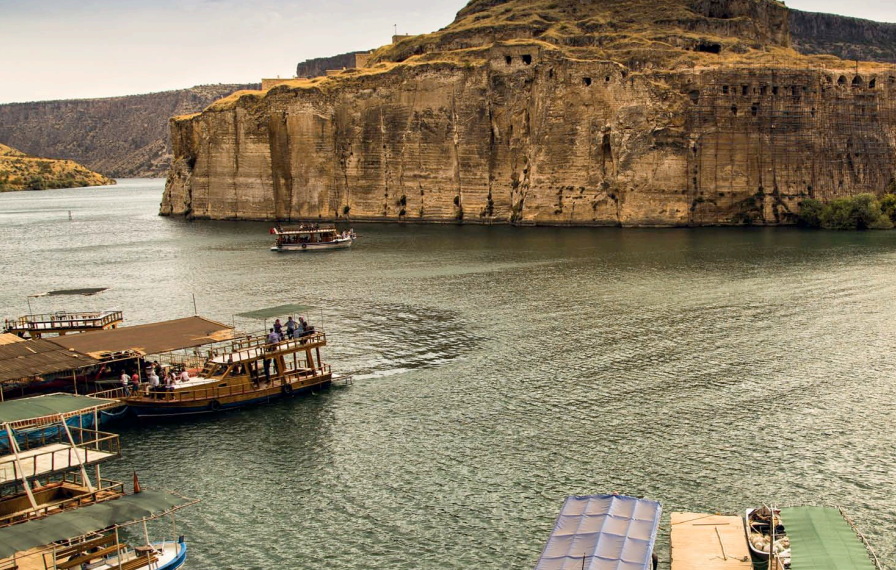By: Asfandiyar

South Asia is a very diverse region. Sometimes its residents are united beyond borders, while other times they are divided and scattered on minor issues. Cricket, food, cultural heritage and art are some common areas of interest and unity in the region. However, the region is exposed to the worst kind of water scarcity in the world. As per reports of the World Bank, National Geographic and Statistica, the region has to face extreme water scarcity events in upcoming years. At this point, ethnically and culturally bounded people began to form groups. Water resources are extremely critical in South Asia due to the region’s major reliance on agriculture, which relies on irrigation. The region’s major rivers, such as the Indus, Ganges, and Brahmaputra, supply essential water supplies to nations such as India, Pakistan, Bangladesh, and Nepal. Water shortages and uneven distribution, on the other hand, have led to tensions and disputes over water sharing, notably between India and Pakistan. For resolving water matters and encouraging bilateral cooperation, hydro-diplomacy has emerged as an important tool.
Hydro-diplomacy uses talks, and cooperation methods to regulate shared water resources. It seeks mutually beneficial solutions, equitable water allocation, and sustainable water management practices. In Indo-Pak relations, hydro-diplomacy is essential for reducing tensions caused by water conflicts and enhancing collaboration for sustainable water use. Water issues between India and Pakistan centered mostly on the Indus River system, have long been a cause of contention. The Indus Water Treaty (IWT), signed in 1960, established a framework for water cooperation between the two countries, but problems and disagreements persist. Through hydro-diplomacy, India and Pakistan may address mutual concerns such as water shortages, climate change effects, and infrastructural development. Effective hydro-diplomacy may increase trust and confidence between the two countries, paving the way for increased collaboration in areas other than water management.
The Indus Water Treaty (IWT), agreed in 1960, is a water diplomacy milestone and a crucial foundation for water cooperation between India and Pakistan. As a result of the World Bank’s facilitation, the escalating water disputes between the two countries have been resolved. However, there exist some bottlenecks. The author, Tim Marshall, states about Indo-Pak ties in his book, Prisoners of Geography, that with India it always returns to Pakistan, and with Pakistan it returns to India. Both sides have their own concerns. Both nations are accusing each other of breaking the treaty’s articles, notably those pertaining to hydroelectric project development and water diversion. Pakistan is primarily reliant on the Western Rivers for water, whilst India has greater influence over the Eastern Rivers. In Pakistan, this uneven distribution has raised worries about a shortage of water and perceived water insecurity. Rising temperatures and the melting of Himalayan glaciers pose a severe danger to the region’s water resources. Despite that, India and Pakistan’s ongoing political difficulties have an impact on their water cooperation. The cessation of bilateral conversations, as well as a lack of trust, impedes efficient water use and conflict resolution.
Hydro-diplomacy could be a first step in the water-scarce region for resolving existing political issues for regional integration and stability.
In his book Diplomacy, Henry Kissinger writes, “When statesmen want to gain time, they offer to talk.” One should reimagine South Asian politics in terms of this quote. If leaders on both sides are sensitive and want to take affirmative steps, they must give priority to diplomacy. And why hydro-diplomacy is of evident from different reports. One tanker holding almost 4,000 liters of water lasts a week and costs around 6,000-7,000 Pakistani rupees, according to the informal rate chart. With Pakistan’s per capita income hovering at 340,590 rupees and 39.3 percent of the population living below the poverty line according to 2020-21 projections, few families can afford to pay roughly 28,000 rupees per month for water. Pakistan, being a lower riparian state, should endure hydro-diplomacy options. Boycott is not a solution to every problem. If so then how Islamabad is going to deal with Kabul’s plan of building a dam on the Kabul River?
Through good water management practices, hydro-diplomacy promotes collaboration and mutual advantages between India and Pakistan. This can include collaborative infrastructure projects like reservoirs or irrigation systems that allow for the sharing of water resources. Water management collaboration can promote fair water distribution, optimize water usage for agricultural and energy production, and alleviate the effects of water shortage on both nations. India and Pakistan can solve similar concerns and discover new solutions that will help their respective populations and economy by working together. Water-related issues are frequently delicate and, if not managed carefully, can rapidly grow into confrontations. Both nations may develop confidence and limit the possibility of misconceptions by participating in open and honest discussions, exchanging information, and collaborating on shared surveillance and data exchange. Regular interaction pathways, such as the Indus Water Treaty’s Permanent Indus Commission, can serve as forums for continuous debates and dispute resolution methods. Building trust and confidence is critical for long-term collaboration and safeguarding India and Pakistan’s peaceful relationship.
The writer works as a freelance journalist based in Islamabad. He can be reached at @AxfandOxaan on Twitter.
